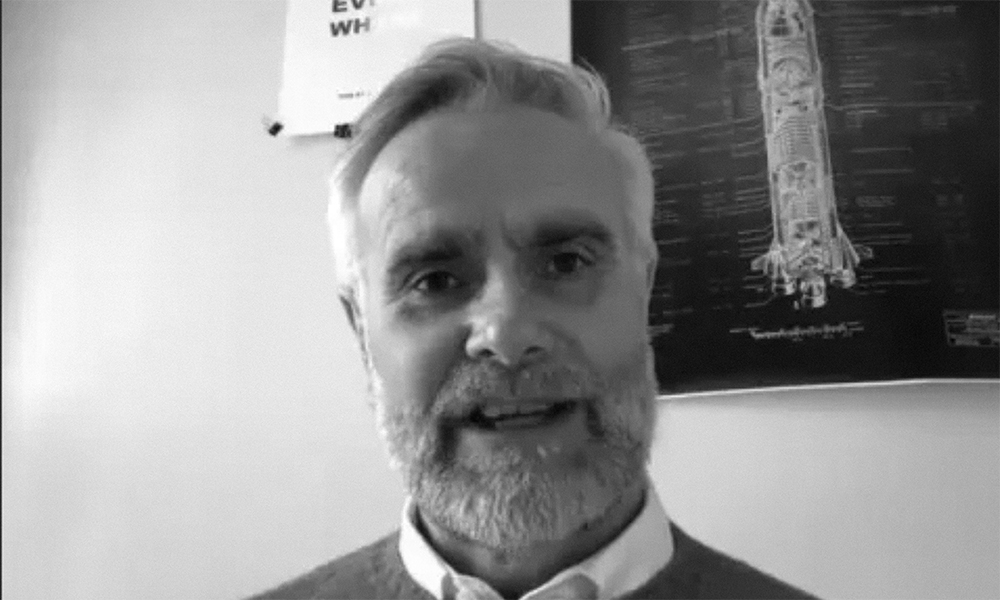
Photograph: Dylann Hendricks/Unsplash
Most of the time, automation is seen as an end rather than a means. Ask someone who specialises in this area what the key purpose of their role is, and you may expect to get the obvious answer of ‘we automate manual tasks’ – but this is far from the end of the story. I suggest the answer should instead be ‘we make everything more efficient and improve the experience of our customers’, or even ‘we turn tedious tasks into easier ones – making our people happier’.
Considering automation as simply a technical function to alleviate time and labour-intensive tasks indicates, to me, poor strategic thinking – a lack of vision, of understanding the benefits, and of effective culture. This is a perfect formula to end up leading unsuccessful automation programmes (the failure of which is subsequently blamed on the technology).
CEOs and CIOs need to understand that the success of an automation programme starts with a good strategy and vision that they need to put on the table with C-level sponsorship. When an organisation decides to get started on the automation journey, or is already taking the first steps, it would be wise to ask themselves and their teams a few questions to make sure they are on the right track.
#1 Why are we running this automation programme?
This question has nothing to do with automation and perhaps is the most important and difficult question to ask. This question touches the core of the company and involves understanding ourselves, our needs and our problems as organisations.
This is one of the reasons why the C-suite needs to be involved in answering this question: they convey the vision of the company to the team. By doing this, the Head of Automation (or whoever is in charge of the automation programme) can ensure the automation strategy directly supports the overarching strategic aims of the company and understand the specific challenges their organisation faces.
A common misconception about automation is that the goal is to reduce the headcount of the company by mechanising previously manual tasks – and if this is the only driver for putting an automation plan in place, this is a flawed approach. To succeed, automation programmes need people: their talent, skills and knowledge.
To get people on board, start with all the things that automation can do for them – and for the company – such as improving their experience at work by removing repetitive, low-value tasks. Companies who apply this approach are able to retain talent by increasing work satisfaction, as their staff can focus on rewarding, high-value activities. In terms of organisational benefits, companies can lose money and credibility because of unreliable (or missing) data, which could be easily solved with some automations.
There are as many scenarios (and opportunities for creating advantage) as departments by company. Organisations must find their own automation mission by uncovering their own pain points and being determined to solve them.
A compelling use case for any company is improving customer services. Who doesn’t want immediate answers to a request or service, or just to provide a service 24×7 to their clients? This means more business with better quality services. Perhaps some key operations are outsourced to a remote company, and we want to recover control without necessarily expanding local teams. There are as many scenarios (and opportunities for creating advantage) as departments by company. Organisations must find their own automation mission by uncovering their own pain points and being determined to solve them.
Keep the vision for your automation strategy front and centre. As much as you can, try to ask the question of ‘why are we running this programme?’ with a people-centric approach. Ask yourself how you can identify and address an individual’s daily issues within the organisation, and outside it, the client’s issues.
#2 Is this a good candidate for automation?
Identifying the pain points and areas of improvement will give us a reason to work on those areas, and the enterprise vision will give us a direction, a higher goal to achieve. It sets where we want to be. With all this done, the next natural step is to find a solution for those problems, but how can we be sure that a particular problem is real and that its best solution is automation?
In my experience, incorrectly choosing which functions to automate is the most common mistake that leads to project failures (and the main friction point between the business and the IT team, when the solution can’t meet business expectations).
The more people it helps, the more interesting, powerful and cost-effective the use case for automation will be.
Many things can be said here about how to identify the best candidates for automation. There is a lot of documentation on the matter, but to cut a long story short – and in keeping with my previous recommendation about taking a people-centric approach – the more people it helps, the more interesting, powerful and cost-effective the use case for automation will be. This simple rule will help you to prioritise opportunities, and even identify how powerful the opportunity pipeline is.
This rule helps us to avoid spending time focusing on candidates for automation that end up only easing the processes of one individual. Unless somebody says this is the most critical task in the company, applying our rule, this doesn’t look like a good candidate for automation. If you analyse the investment made to implement the case versus the efficiency saving, the benefit and return of investment won’t be positive. Unless you’re looking for a pilot candidate, you should deprioritise this use case.
#3 Is our team ready to take on the challenge?
Especially in organisations at an initial level of maturity or taking the first steps in automation, your teams will have a lot on their mind, questions without answers, mostly because of lack of information about the strategy and knowledge in automation.
Some will fear being replaced, some will ask about the way their activities will change, others will have odd expectations. Whatever the question, we, as leaders, owe all of them an answer.
The first thing we need to admit is the fact that automation is a new paradigm, a new way of working, and it involves a new way of interaction between a virtual worker – or robot – and a human. So the questions the people may have are fair ones. If the strategic vision is not clear, some will fear being replaced by a machine, some will ask about the way their activities will change, others will have odd expectations about automation. Whatever the question, we, as leaders, owe all of them an answer.
In this phase, it is critical to address this issue and communicate, clearly and consistently, what the aim of the project is to the teams. At this stage, the backing of the C-suite, as well as goals, benefits and vision, must be crystal clear.
The initial communications need to come from the top management level in order to connect people with the global strategy of the company and to prove the company supports the programme. The goals should infuse automation culture in the teams and main stakeholders. In the same way, the feeling of working with a spreadsheet nowadays is a commonplace thing, we need to create enough automation awareness in our teams for them to realise that automation is one more tool in their day-to-day working lives.
Every technological revolution has entailed cultural and workplace transformation, and in this case, it is no different. We need to reskill our teams, guide them into the transformation, and steer the organisation to embrace the journey.
…
With these questions, any CEO should know if their organisation is prepared to address the challenges about to come. It can be considered a self-assessment, a list of tasks that any company should have in their priority list, and a call to minimise issues and blockers along the way.
Automation without a purpose is pointless, but is even more pointless when we don’t put people in the centre of our automation programmes. Automation, ultimately, is about enhancing the human experience – about not just making our workplaces more efficient, but our society stronger.

















































